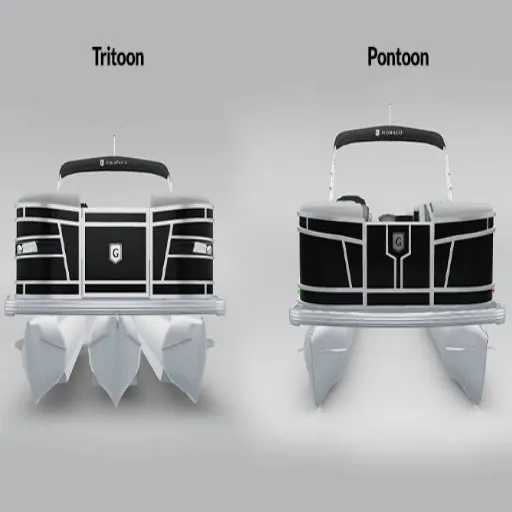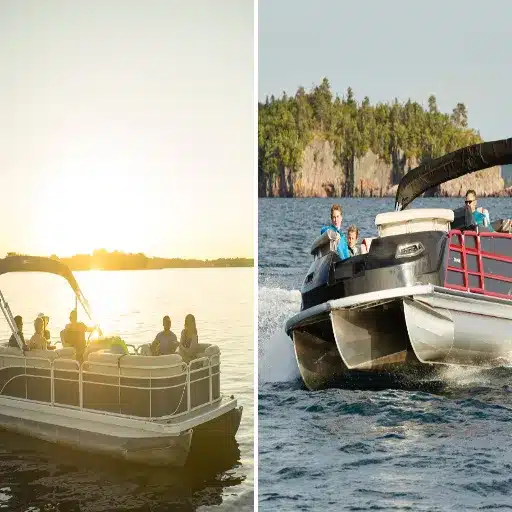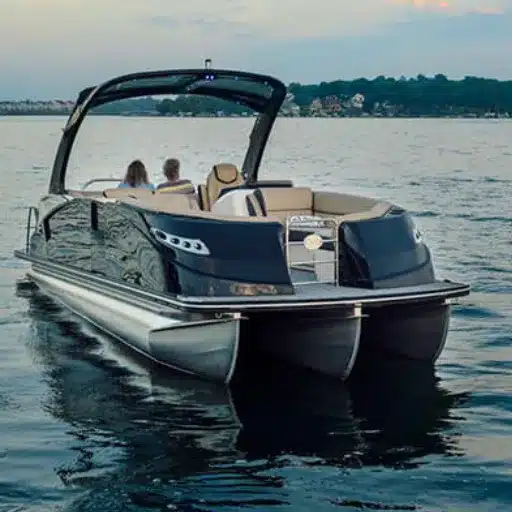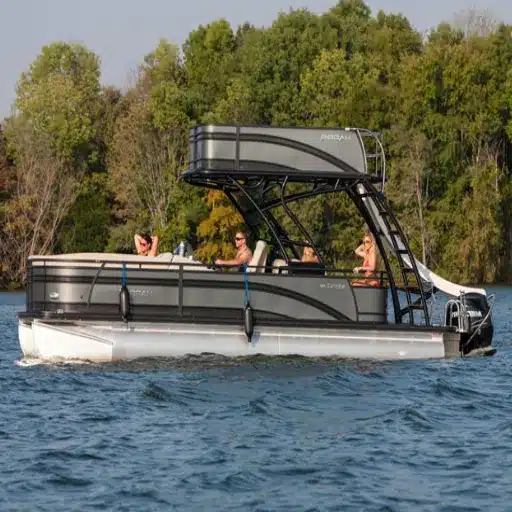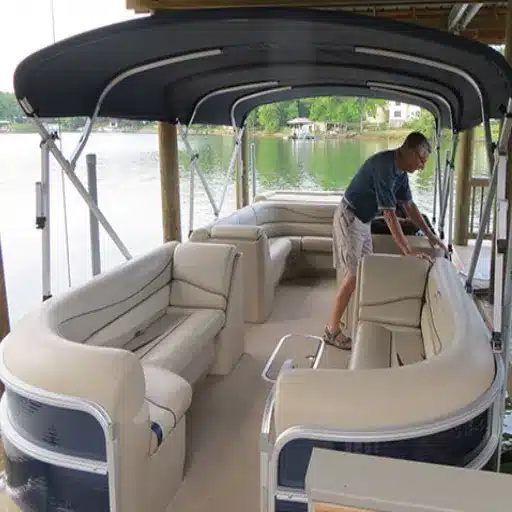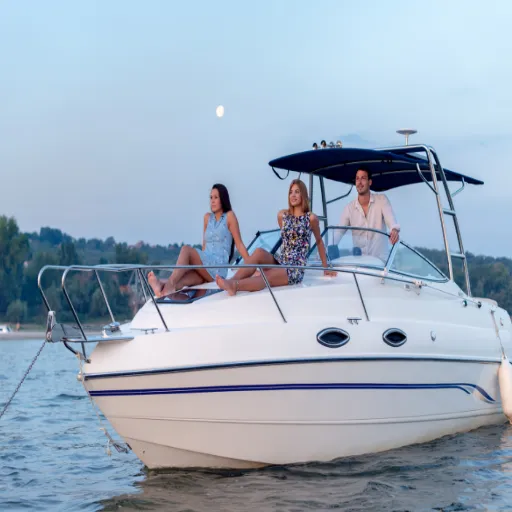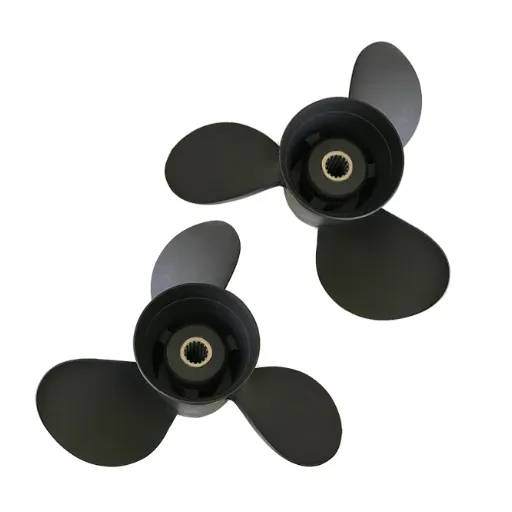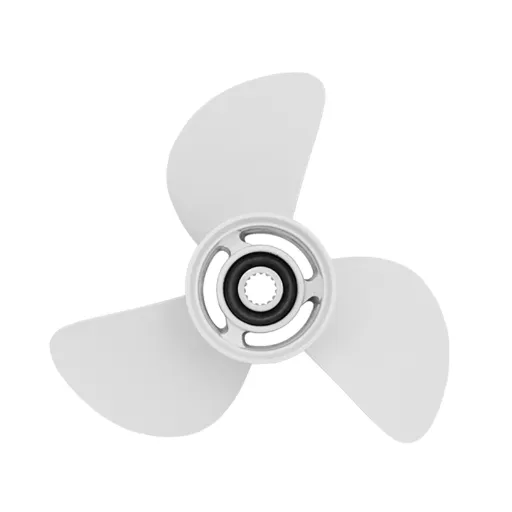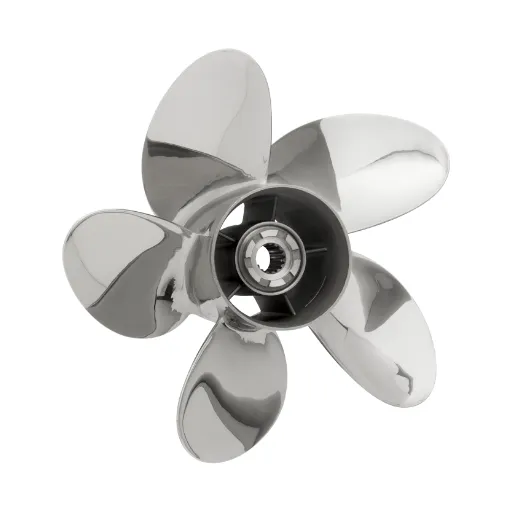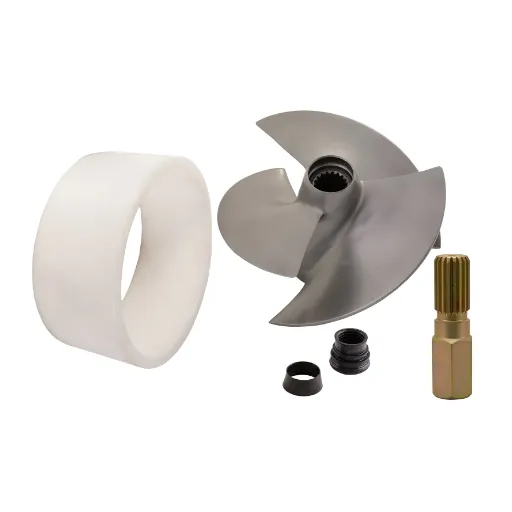In terms of either of the watercrafts, for leisure boating, it is a decision that every wise buyer has to think about carefully. These two choices of watercraft may appear similar from a distance, but their differences extend below the beautifully designed hulls. Depending on performance, stability, passenger capacity, or price, tritoons and pontoons can massively affect the actual boating experience. This guide will explore the key differences you need to know before making a purchase for lounging days on calm lakes or high-octane cruising across open waters. By the end of this, you will have a clear idea of which vessel best meets your wants, needs, lifestyle, and budget.
Understanding the Basics of Pontoon and Tritoon Boats
P
What Is a Pontoon Boat?
A pontoon boat, by nature, is a vessel with a flat deck and loose cylindrical flotation structures comprising its support system called pontoons or tubes. These pontoons, usually made of aluminum, form the base of the boat, keeping it stable, buoyant, and rugged, and this is why pontoon boats are generally excellent choices for any water leisure activity. Due to their spacious and open layouts, pontoon boats typically offer ample seating, storage, and social space for fishing or sunbathing. These boats are typically 16 to 30 feet in length, with smaller ones suitable for intimate trips and larger ones accommodating groups of 15 or more passengers.
Pontoon boat renovation is quite massive, incorporating luxuries such as plush seating, a sound system, a swim platform, and a built-in kitchen. There are also versatile options for engines, ranging from modest outboards for casual cruising to those designed for larger setups that tow water skiers or achieve higher speeds. Known for their nearly impenetrable stability and relatively smooth rides in calm water, pontoon boats are most commonly seen on lakes, rivers, and bays, making them the favorite choice of families and recreational boaters. In short, versatility, comfort, and ease of use are reasons enough for anyone to consider a pontoon boat for leisurely outings.
T
What is a Tritoon Boat?
A tritoon differs from a traditional pontoon boat by having three aluminum or fiberglass tubes or “logs” instead of two. This extra tube in the setup makes the boat more stable, buoyant, and better performing, especially in rougher waters. This additional name is given because these boats can carry higher speeds and heavier loads, and are therefore reasonably suited for more fun and adventurous activities, such as watersports or long excursions with relatively large groups. Due to this high-speed environment, the engines of tritoons are more potent than those of pontoons; they can carry power plants exceeding 300 horsepower, which provides smoother rides and better control even in choppy conditions. However, due to their intense design and options, tritoons present a scarcer choice for anyone looking for a luxury and performance-oriented multifunctional boat.
Key Features Comparison
| Feature Category | Pontoon Boats | Tritoon Boats |
|---|---|---|
| Capacity & Space | Designed to accommodate larger groups, offering ample seating and open spaces, making them ideal for family outings or social gatherings | Enhanced carrying capacity with more even weight distribution, accommodating 15+ passengers in larger models with greater stability |
| Ease of Use | Easy to use and maintain, appealing to both beginners and recreational users | More complex design requiring more attention due to additional structural elements and high-performance engines |
| Affordability | More affordable than tritoons, spanning from budget-friendly to expensive options | Higher price point due to enhanced design, performance features, and luxury amenities |
| Water Performance | Excellent for calm water motoring across lakes, rivers, and other peaceful waters | Versatile use from calm to choppy waters, supporting various activities from fishing to watersports |
| Special Features | Modular customization options: sunbathing decks, fishing stations, entertainment areas | High-end features: plush seating, advanced GPS systems, premium entertainment packages |
Pontoon vs Tritoon: Performance and Handling
🚀 Speed and Maneuverability
If speed and maneuverability are taken into consideration, then, as in many other cases, a boater’s tastes could lean toward one or the other option. A traditional pontoon, which sports a two-tube design, is excellent for casual cruises. It offers good handling, but when it comes to higher speeds, it definitely falls short of its highest tier and is well-suited for peaceful, leisurely evenings on the water.
Additionally, a center tube is located on a tritoon for improved performance and stability. This extra tube helped with weight distribution, allowing tritoons to accommodate rather powerful engines. Thus, with less weight to carry, tritoons are faster than the respective pontoon boats, being widely used in water skiing and wakeboarding. Additionally, this added tube makes tritoons more agile when turning and enables them to make tighter, smoother turns, even in rougher waters.
⚖️ Stability in Water
Stability-wise, the multi-hull designs of the tritoons and pontoons make them an almost perfectly stable choice. Pontoons, the two-tubed sort, strike a nice balance of stability in relatively calm conditions. They would be ideal for a leisure cruise, fishing, or a family day out, where stability is paramount. Tritoons take a step higher for stability by the introduction of a third tube. Third tubes offer increased mileage in distributing weight across the span of the craft and keeping it steady, sometimes in rougher water, with weight laden on one side.
The design of the tritoons provides a dual purpose, guaranteeing a smooth ride while also preventing tipping or rocking, especially in high-speed, hard turns or choppier water conditions. Many boating enthusiasts value this added stability due to its safety and passenger comfort aspects, making tritoons their favorite choice when navigating unsteady water bodies. And so, whenever shopping for either one, buyers need to consider the typical traits of the water bodies on which they would most probably do a majority of their boating.
🏄♂️ Which is Better for Watersports?
When looking at pontoons versus tritoons for water sports, it all comes down to performance, handling, stability on various waters, and to a certain degree of glamour. Tritoons are faster than a traditional pontoon because they can go faster and maneuver better over wakeboarding, waterskiing, or tubing. Greater buoyancy will allow for a larger engine, which will provide sufficient thrust to tow water sport enthusiasts without effort. Hence, it is better to make sharp turns in choppy waters for a much smoother ride, which will be safer for both passengers and attendants participating in these high-energy activities.
Pontoons, conversely, can still be suitable for lighter water sports, especially when conditions are calm, where neither speed nor agility is required. Their simpler two-tube layout represents a cheap solution for leisure activities such as tubing at moderate speeds. Stability problems may arise at higher speeds or in rough water when performing. Make the choice that will end up being more suitable to your aquatic adventures by relying on what you intend to do, the usual water condition, and the kind of performance you seek.
Comfort and Capacity: Tritoon vs Pontoon
Seating Capacity
Known for their expansive flat decks, pontoons accommodate seating for families and groups ranging from 8 to 15 persons, while tritoons can handle 15+ passengers with enhanced weight distribution.
Comfort Levels
Tritoons tend toward luxury with upgraded upholstery and ergonomic designs, while pontoons focus on comfort and relaxed layouts for casual outings.
Storage Options
Both feature ample storage compartments, with modern designs maximizing space without compromising beauty and functional usability.
Storage Features Overview
For a smooth, pleasant experience out on the water, considering storage for gear becomes an essential choice for a boat. Today’s modern pontoons and tritoons feature ample storage compartments to accommodate crucial items, such as safety equipment, fishing gear, water toys, or personal belongings. For instance, most models provide an under-seat storage compartment that serves as a hidden, weatherproof spot to keep an owner’s belongings secure and dry. High-tech models could even be fitted with additional built-in storage lockers or in-floor storage compartments for increased storage space, which can be used for storing and organizing bulkier gear, such as wakeboards or coolers. Meanwhile, the fishing realm equips anglers with rod holders and fishing-specific storage solutions for added functionality and convenience.
The latest designs focus on maximizing the available space, without compromising on beauty and the boat’s functional usability. Contemporary materials, such as marine-grade vinyl and corrosion-resistant hardware, are used to provide durability and longevity to storage areas, even in high-moisture conditions. Custom storage types may enhance usability by giving the watercraft owner with flexibility to cater to their own needs. Regardless of whether one has water sports, fishing, or cruising in mind for the day, sufficient storage and accessibility will definitely maximize both function and fun.
🎨 Design and Aesthetic
For watercraft, design, and aesthetics are less about beauty and more about functionality and experience. The advancements in design bind streamlined, aerodynamic lines with ergonomic considerations to support performance and comfort. Forefront materials, such as lightweight composites, promote maneuverability without compromising strength and stability. Color choices and finishes have further evolved to provide owners with the ability to customize their vessels and make a fashion statement, all while ensuring UV protection and durability.
Interior design-wise, equal importance is given, aligning with optimization in terms of efficiency and comfort. Details like padded seats clothed in marine-grade upholstery, accentuated by LED lighting, and deck spaces, which are strategically placed for both convenience and appearance, all serve these purposes. From pure contemporary minimalism to bold and eye-popping styles, watercraft aesthetics are increasingly tailored to strike a perfect balance of form and function, providing an entertaining experience on the water.
💰 Cost Analysis: Tritoon vs Pontoon
💵 Pontoon Boats
- ✅ Budget-friendly option
- ✅ Lower maintenance costs
- ✅ Better fuel economy
- ✅ Stable resale value
💎 Tritoon Boats
- ⭐ Premium features included
- ⭐ Higher resale value
- ⭐ Advanced technology
- ⭐ Luxury amenities
📊 Maintenance and Operating Costs
Maintenance and operating costs are aspects to consider when owning a pleasure craft, as they are essential for a smooth cruising experience and keeping the vessel in top condition. Regular maintenance would include cleaning, engine servicing, upholstery care, hull inspection, and other necessary tasks. Maintenance itself would be cheaper for pontoons, owing to their simpler design and lighter weight. At the same time, tritoons may require a little more attention, due to those additional structural complexities and possible high-performance engines.
Fuel consumption is yet another factor influencing the operating costs. Pontoons, typically employing smaller engines, tend to consume less fuel in their operations and therefore are more economical for leisurely outings. Tritoons with large, powerful engines will likely incur higher fuel costs, especially during towing activities or high-speed cruising. Seasonal expenses should also be considered by the owners, including winterization and storage costs. Indoor storage is essential in protecting boats from severe weather conditions, but the overall cost will depend on various factors, including the location, type of storage, and more.
Insurance costs and registration fees for boats should be taken into account. On average, insurance will probably cost a bit more for the tritoons because of their higher value and better capability. Both vessels require almost similar routine care; however, keeping track of and planning these ongoing costs can contribute to the boats’ upkeep within budget.
📈 Resale Value Trends for 2025
The resale values of pontoons and tritoons in 2025 will likely vary according to different market dynamics that are influenced by consumer preferences, technological changes, and economic conditions. Retaining higher resale prices, tritoons offer greater performance, stability, and group-luxury opportunities. Buyers would often consider these extra qualities, thus making tritoons a more sought-after option in the used boat market.
Pontoons, conversely, remain slightly cheaper and thus hold great value for buyers who prefer versatility and ease of use. The market for pontoons may remain consistently in demand among casual boaters or first-time buyers, which therefore keeps the resale value stable over time. The upgrading of newer models with advanced materials and an efficient engine can also help augment the prices of resales of both types at every level.
Other demographic data suggest that the location of the boat buyers, the condition of the vessel, and the availability of additional features, such as customizations or technological upgrades, significantly impact the resale value. Sellers who prioritize proactive maintenance and timely upgrades will find more competitive pricing as they ride the wave of resale trends in 2025.
🚀 2025 Trends in Boating: What to Expect
🤖 Emerging Technologies
In terms of pontoon and tritooning emerging technologies, it appears to me that the trend is developing toward more intelligent and more integrated systems coupled with enhanced performance and user experience. Hence, one of the most exciting improvements is the AI navigation engine, which facilitates route building and ensures safety. These boats are being equipped with high-caliber sensors and autopilot systems that enable them to dock, avoid obstacles, and follow the most efficient route. Such inventions lower entry barriers for new boaters and ramp up time efficiency for seasoned ones.
Another game changer is the development and installation of sustainable energy solutions. Electric propulsion systems and hybrid engines represent relatively new biotechnological technologies, offering alternative methods to traditional motor fuels with a more peaceful and environmentally friendly approach. In some models, solar panels are used to provide auxiliary power to onboard electronics, reducing dependency on external charging sources. These developments clearly align with the broader trend of environmental consciousness within the boating community.
The emphasis on luxury and conveniences on board cannot be stronger. An image of a car’s touchscreen-present dashboard would ensure mobile app linkage among features like lighting and entertainment system management on the brilliant side. The recreational boating sector also enjoys Americanism of builders seeing solutions like augmented reality fish finders and discontinued Wi-Fi. With technology evolving, pontoon and tritoon boats are not only adapting and embracing, but also spearheading and fusing cutting-edge amenities with the ancient, pure leisure pastime of being on the water.
🌱 Eco-Friendly Options for Boating
In terms of eco-friendly boating, I find that nature offers many fun and responsible water activities that do not harm the environment. Electric and hybrid propulsion systems have grown in popularity. These systems ensure quieter operations and zero to near-zero emissions, allowing one to decrease his/her carbon footprint. Many manufacturers offer boats with all-electric motors or hybrids that ensure fuel economy and environmental consciousness simultaneously. It warms my heart to know how technology is helping to forge a greener future for boating.
Another thing I do is take care to consider the materials and products I bring aboard my boat. From ecological boat cleaners to biodegradable sunscreens, I want to ensure that everything I pack is gentle on marine life. I also attempt to harness my boat with renewable energy sources wherever applicable; solar panels to power onboard appliances are efficient and complement my principle to curb energy wastage.
At the end of it all, I have come to understand that small habits actually count. Putting trash where it belongs, avoiding single-use plastic items, and adhering to local laws help keep the water clean and safe for everyone. Eco-friendly methods take me in the opposite direction; in return, I sit down and relish the beauty of the water. In a way, I contribute to the conservation of those waterways for generations ahead.
📊 Market Demand Insights for 2025
The market demand in 2025 will be driven by start-up technologies, shifting consumer behaviors, and a sustainability trend. In my opinion, these factors will present both challenges and opportunities. For example, as artificial intelligence, automation, and advanced analytics continue to advance, one might expect an increased demand for more innovative and efficient solutions to handling extremely complex problems. I think businesses will spend on tools and platforms because they will increase productivity and also provide insights for informed decision-making. Having said that, I am also adapting to stay flexible and utilize new solutions to remain competitive in today’s rapidly evolving market.
Furthermore, sustainability will become one of the primary forces driving consumers’ decision-making paradigms throughout 2025. The industries would thereby have to start integrating their strategies into the framework of sustainable practices, as more and more people are leaning towards eco-friendly products and services. I see this as an opportunity to promote green initiatives and products that prioritize environmental and social responsibility. The louder consumers become in demanding transparency and accountability, the better a company that delivers on these levels will fare. I view applying an environmentally conscious approach aligned with consumer expectations as my priority.
Ultimately, I examine how far digital transformation has advanced during the pandemic. Remote working, growth in e-commerce, and the rapid advancement of digital platforms have transformed our lifestyle and working methods. I believe there will be a greater emphasis on seamless digital experiences, personalized engagement, and scalable technologies by 2025. This insight enables me to refine my strategies even further, with user experience and technology at the forefront of my priorities. These market-demand insights demonstrate that it pays to be adaptable and foresighted as we look to the opportunities and challenges ahead.
Reference Sources
-
Tritoon vs. Pontoon: What’s the Difference? – Godfrey Pontoon Boats: Explains how tritoons handle rougher waters better and provide a smoother ride compared to pontoons.
-
Pontoon vs. Tritoon: Which Should You Buy? – Harris Boats: Highlights key differences in performance, cost, and suitability for different boating needs.
-
Tritoon vs. Pontoon – Discover Boating: Discusses horsepower ratings, speed capabilities, and the advantages of triple-tube pontoons.
-
Tritoon Vs. Pontoon: How Are They Different? – Bennington Marine: Focuses on structural differences, stability, and performance benefits of tritoons over pontoons.
-
Tritoon vs Pontoon: Key Differences Every Buyer Should Know – HiSeaDock: Covers the wider hull of tritoons, their ability to carry more equipment, and their passenger capacity.
- Find more info now.
❓ Frequently Asked Questions (FAQs)
Tritoon boats are designed with three aluminum tubes, while a conventional pontoon boat features two. This extra, third tube significantly increases buoyancy and stability in rough water, making tritoons an excellent fit for all kinds of water sports, including wakeboarding and tubing. Additionally, tritoons can accommodate engines with higher horsepower ratings, providing improved performance and increased speeds. When purchasing a pontoon, consider these differences in relation to your specific needs and budget.
Tritoons were built to provide greater stability and handling, especially at high speeds. With the third tube, the balance of weight distribution is maintained, thereby affording better performance in a variety of water conditions. In addition, the third tube allows for a greater maximum HP rating, enabling consideration of activities such as pulling skis or participating in other water sports. If your boat is designed for cruising in rougher conditions and requires top performance, then a tritoon is likely the better option.
Tritoons are considered better vessels for water sports due to their enhanced stability and performance. A third pontoon enhances stability and handling in choppy water, which is crucial during activities like wakeboarding or waterskiing. Tritoons feature larger engines, providing not only speed but also increased towing capacity, allowing for more than one water sports enthusiast. If your primary use of the boat involves active water sports, you might want to consider investing in a tritoon to really enhance your activities.
Performance is one of the major differences that distinguishes tritoons from pontoons. With the third tube added, they impart the usual handling and excellent stability, especially at higher speeds, thus making them highly suited for some sort of thrill. They can also accept performance packages that include higher-horsepower engines, giving a tritoon a much finer and faster top-end speed compared to a regular pontoon. So, if you need a boat for rougher conditions and an exhilarating experience, the tritoon might be your best pick.
When deciding between a pontoon and a tritoon, your intended purpose, budget, and the conditions of the waters through which you will navigate come into consideration. If you plan just to cruise lakes and rivers with calm conditions, then a normal pontoon will be just fine. Should you wish to turn to watersports or navigate choppier waters, a tritoon is just fine, with the third tube offering more security and better handling. Also, consider the fact that a pontoon is cheaper, while a tritoon is more expensive, being a more advanced design with additional features.
Sure! Tritoons serve multiple purposes, such as cruising and leisure activities. Their stability lends comfort to a leisurely outing with family and friends, as well as compensation for the exertion of watersports. The third tube also creates a smoother ride, which is ideal for longer excursions on a lake. So, whether your activity is a leisure day on the water or something high-energy, such as tubing, tritoons can undertake those activities.




